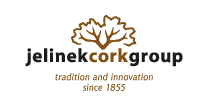We all aspire to achieve sustainability in building, but it can be an overwhelming and daunting task at times. The definitions of sustainability and best practices can appear at first glance to be actively in conflict as we try to make our homes, offices and other buildings healthier for humans and the planet.
Environmentally sustainable buildings need to be designed beyond the traditional three R’s, considering the building’s overall impact and ways to minimize it while maximizing the budget, natural resources of the site location, and the longevity of the project.
Read more about sustainable use practices.
Most common unsustainable building materials have sustainable alternatives, including renewable and reclaimed materials. Renewable materials like cork, wool, and bamboo have a range of uses, from flooring to new and innovative construction materials such as foundations and exteriors. Reclaimed materials like reclaimed wood are ideal options for exposed beams and flooring, merging incredible strength with a rustic look.
Recycled materials, often made from recycled rubber and plastics, have also become popular in the last several years. Increasing the use of these materials can help drastically reduce landfill waste while building durable and long-lasting structures.
Learn more about what makes a building material sustainable.
Within the sustainable material market, some materials are better suited to a specific project or better address a concern. Cork and bamboo floors are two of the most popular sustainable flooring materials.
Both cork and bamboo are:
Sustainable
Easy to Clean & Care For
Long-lasting
But that is where the similarities end. Cork has more underfoot cushion, making it ideal for where you will be standing for long periods. Its better thermal and acoustic properties make it ideal for residential and multifamily building use. Bamboo flooring is harder, making it a great choice for high-traffic environments.
Compare other sustainable building materials.
We believe that cork has a storied place in the history of sustainable building materials and endless potential for the future. This traditional and innovative material has been used in smaller applications as an insulator for centuries, and it has recently become a popular choice for whole-house insulation, especially for those with chemical sensitivities.
Find out more about cork insulation.
Cork is also an innovative solution to sustainable building challenges. Cork spray, for example, is a sustainable stucco alternative that is highly insulative and element resistant, making it ideally suited for rugged environments like coastal and desert regions.
Learn more about cork spray.
Sustainability isn't an all-or-nothing concept; every little step we can make toward more sustainable options will help. Perhaps just as critically, we need to continue to look at innovative ways to use renewable materials in our buildings - imagine what the future could look like!
